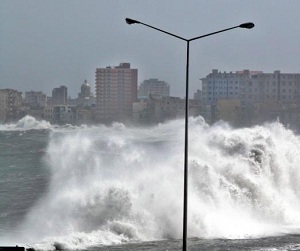 The hurricane season officially began June 1, in our geographical area of interest, which includes the tropical Atlantic, the Gulf of Mexico and the Caribbean Sea, and ends November 30.
The hurricane season officially began June 1, in our geographical area of interest, which includes the tropical Atlantic, the Gulf of Mexico and the Caribbean Sea, and ends November 30.
Meteorology enthusiasts have seen seasonal forecasts on social media issued by various institutions abroad, referring to the probable number of cyclonic organisms to be expected in 2020, with the peculiarity of the emergence in May of extemporaneous tropical storms Arthur and Bertha.
Among the most consulted are those prepared by the U.S. universities of Colorado and Arizona, and by the National Oceanic and Atmospheric Administration (NOAA), in the same country.
All agree that we will have an active season with a number of systems above the annual historic average, which varies between 10 and 12 depending on the series of years analyzed.
Perhaps not so well known, our Institute of Meteorology (Insmet) has joined the small group of research centers in the world that make these types of forecasts, using a statistical synoptic method created by PhDs Maritza Ballester Pérez (deceased), Cecilia González Pedroso and Ramón Pérez Suárez.
Currently, scientists from a younger generation are participating in this research, including meteorologist Nathali Valderá Figueredo, who is working on new projects to give continuity to Cuba’s scientific work in the field.
According to the Cuban forecast, prepared jointly by the Forecasting Center and the Insmet Climate Center, the season will be active, with the formation of 15 named tropical cyclones expected in the entire tropical Atlantic basin (those named after becoming tropical storms), of which eight could reach the category of hurricane.
Ten are expected to emerge in the Atlantic Ocean, two in the Caribbean Sea and three in the Gulf of Mexico, while the probability of Cuba being affected by at least one hurricane is 60%.
It should be pointed out that seasonal forecasts have the value of deepening our knowledge of the atmospheric and oceanic factors that affect the level of hurricane activity, as well as offering us an approximate vision of how many tropical systems may develop during the June-November season.
But these forecasts do not have significant weight in the operational work of specialists, since no model created to date has the capacity to tell us, in advance, specifically when and where a storm will take place.
Beyond the estimated probable number of cyclonic organisms predicted for the entire tropical Atlantic basin, the main point is to be prepared and work preventively to reduce vulnerabilities that could accentuate the magnitude of damages.
The National Meteorological Service is ready to meet the challenges of the 2020 season, with 68 stations located throughout our archipelago, 14 provincial meteorological centers and a radar network; advanced computer models for path forecasting and estimating the extent of storm surges in the event of a hurricane’s proximity, among other technological tools; and, of course, highly qualified human resources.
(Source: Granma)